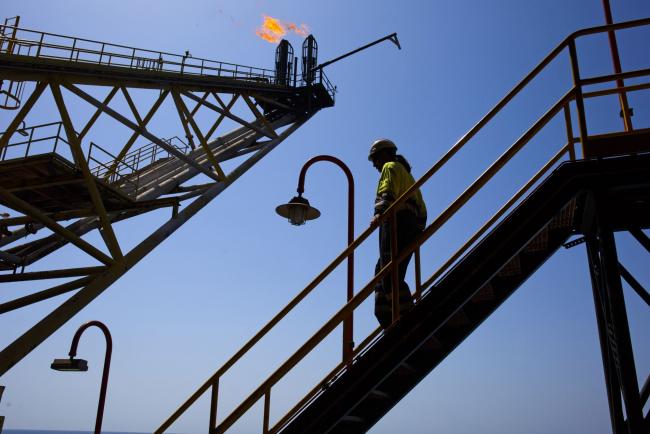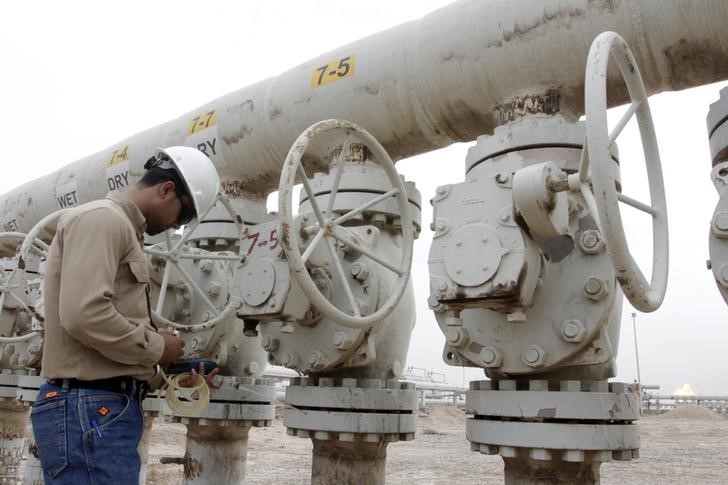(Bloomberg) -- Oil rose to its highest in nearly a week amid a weaker dollar and expectations for supply declines in U.S. inventories.
Crude futures gained 2.1% in New York, while the Bloomberg Dollar Spot Index slipped as much as 0.3%, raising the appeal for commodities priced in the currency. Futures clung to gains in after-market trading following the American Petroleum Institute’s report of a 5.42 million barrel decline in U.S. crude stockpiles last week and draws in both gasoline and distillate inventories.
Prices were also supported by increased refinery activity in Asia, signaling strengthening demand. One Chinese mega-refiner is snapping up barrels of Middle Eastern crude, while India’s refiners have cranked up processing to meet higher consumption during a festive period.
“A weaker U.S. dollar tends to boost all dollar-denominated commodities and vice versa,” said Carsten Fritsch, an analyst at Commerzbank (DE:CBKG) AG (OTC:CRZBY). “This applies in particular to gold, but also to other commodities like crude oil.”
Signs of a demand boost in Asia is helping lift the overall outlook for oil consumption, which continues to struggle to return to normal due to the coronavirus pandemic. At the same time, the structure of the market is pointing to strength ahead. The spread between Brent’s nearest contracts is at its narrowest in six weeks, while the contract’s six-month spread is at the strongest since late July.
Rongsheng Petrochemical Co.’s Singapore unit has purchased at least 7 million barrels in the spot market so far this month for delivery in December and January, according to traders who asked not to be identified because the information is private. The company is buying up crude to feed a trial run operation of its expanded refinery in Zhejiang province this quarter.
“Considering China’s role in the global oil market as largest crude importer, any additional barrels it removes from the rest of the world is an excess barrel missing for the rest of the world,” said Giovanni Staunovo, commodity analyst at UBS Group AG (SIX:UBSG). “Definitely positive if this is a start of a trend.”
Traders’ attention has also turned to plans by OPEC+ to raise supply in 2021 in line with its agreement earlier this year. While some producers inside the group are said to have doubts, the United Arab Emirates and Russia have said that, for the time being, the group intends to proceed as scheduled. OPEC+ nations implemented 102% of agreed supply cuts in September, according to delegates who declined to be identified.
The API report showed domestic gasoline supplies fell 1.51 million barrels and distillate inventories declined 3.93 million barrels. If confirmed by government data released on Thursday, the distillate draw would be the largest since March.
Still, the outlook for demand from refineries remains precarious, with refining margins severely depressed for this time of year. The so-called crack for combined gasoline and diesel against West Texas Intermediate futures remains near $9 a barrel. Refineries typically need the spread to be more than $10 a barrel to make a profit processing crude oil.
“They’re minimizing jet fuel, maximizing diesel,” said Stewart Glickman, energy equity analyst at CFRA Research. “There’s only so much you can do with those kinds of levers. The only other lever they have is to start shutting in runs and producing even less.”
©2020 Bloomberg L.P.

